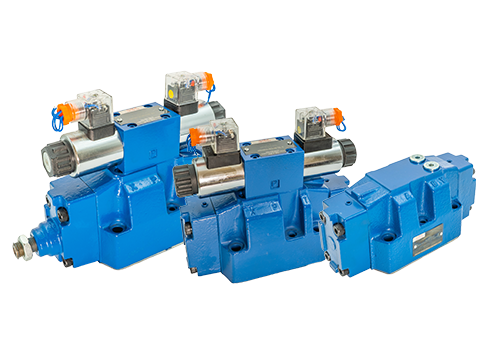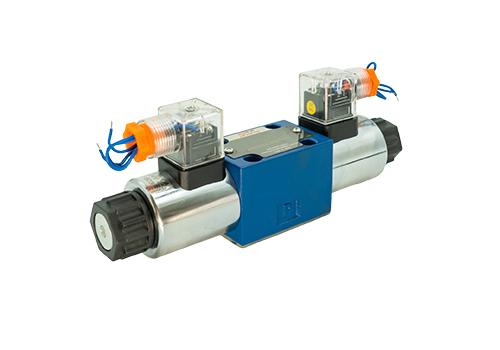
2025-04-07 Electro-hydraulic reversing valve is the core element in the hydraulic system that realizes fluid direction control. It drives the pilot valve through electromagnetic force to control the main valve core to switch oil circuits. It is widely used in industrial automation, engineering machinery, agricultural machinery and other fields. Its core advantages are as follows: 1. High response speed and precise control short response time: the solenoid drives the pilot valve, and the reversing time can be as low as milliseconds (such as within 50ms), and is suitable for high-frequency action scenarios (such as injection molding machine molding, machine tool feed). High control accuracy: By adjusting the pilot valve flow, the main valve core displacement can be accurately controlled, achieving stable start-stop and speed adjustment of the hydraulic cylinder. Case: In CNC machine tools, electro-hydraulic reversing valves and servo systems can achieve accurate control of tool feed speed, with processing accuracy up to ±0.01mm. 2. Large flow and high pressure adaptability of large flow processing capacity: the diameter range covers 10mm to 32mm, and the maximum flow can reach 1100L/min, meeting heavy equipment
Read More 
2025-04-07 The electromagnetic reversing valve is the core element that realizes fluid direction control in hydraulic and pneumatic systems. It drives the valve core movement through electromagnetic force to change the on-off or flow direction of the fluid channel. Its application range is wide, covering many fields such as industrial automation, engineering machinery, agricultural machinery, transportation, etc. The following are the specific application scenarios and features: 1. Applications of machine tools and machining centers in the field of industrial automation: control the expansion and contraction of hydraulic cylinders, the steering of hydraulic motors, and realize tool feeding, workpiece clamping and other actions. Advantages: Fast response speed (millisecond level), high accuracy, adapting to high frequency action needs. Applications of injection molding machines and die-casting machines: Switch the hydraulic oil circuit and control the process flow of mold clamping, mold opening, injection, etc. Advantages: High-voltage and large flow design (such as diameter 32mm, flow rate 1100L/min), adapts to high load conditions. Robot and automation production line application: drive cylinders or hydraulic cylinders to realize the grasping, positioning, and handling of the robotic arm. Advantages: Small size
Read More 
